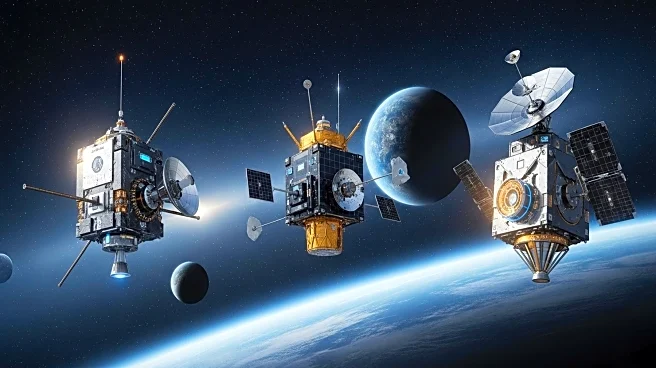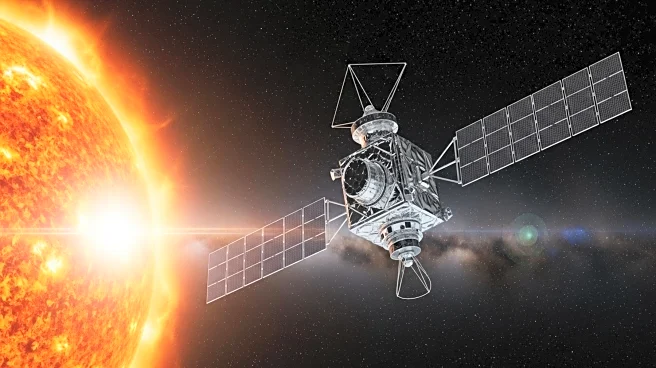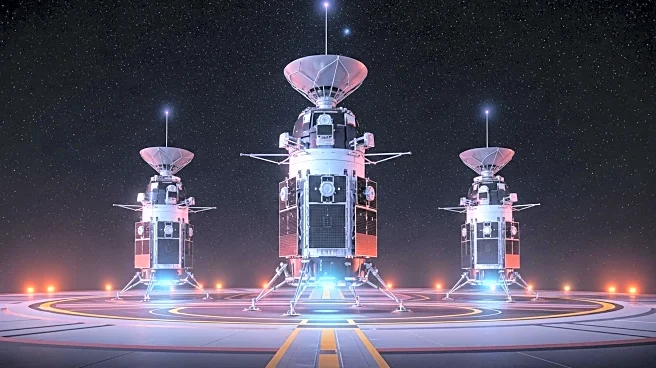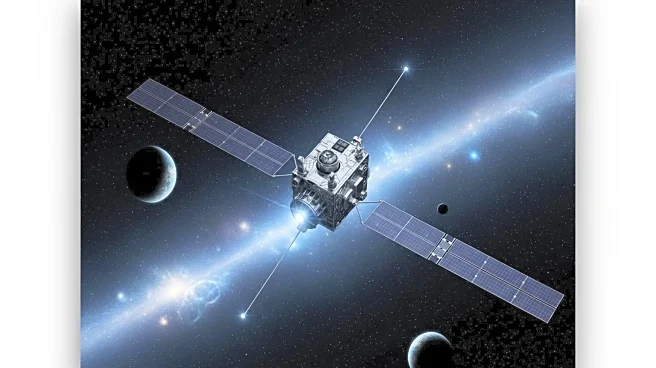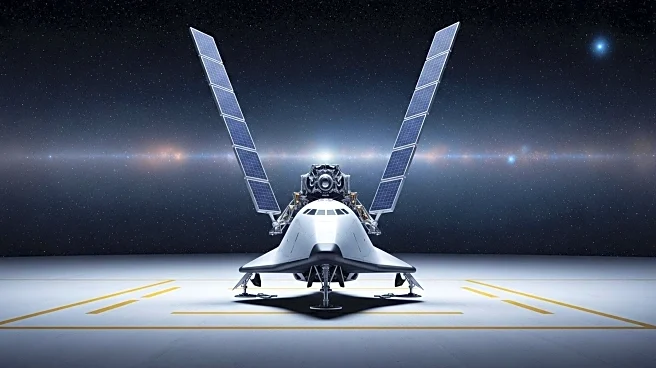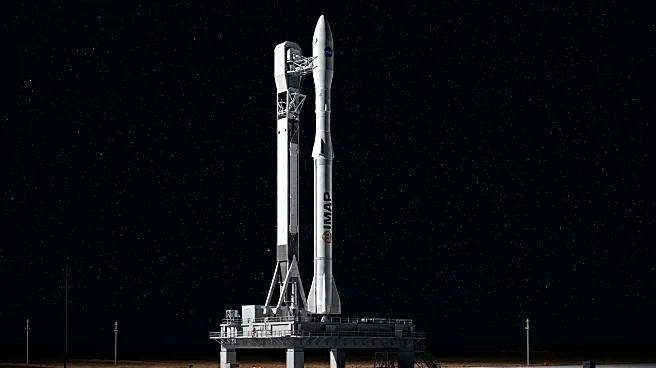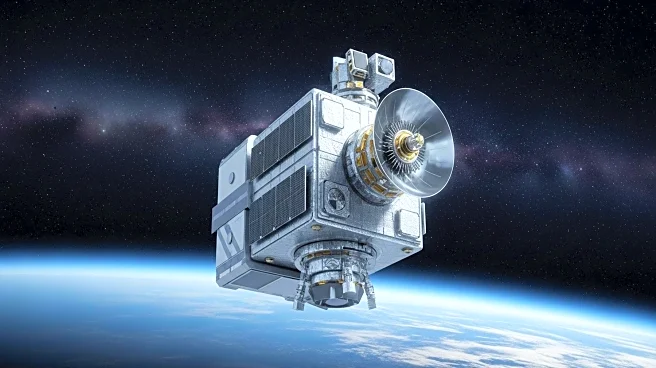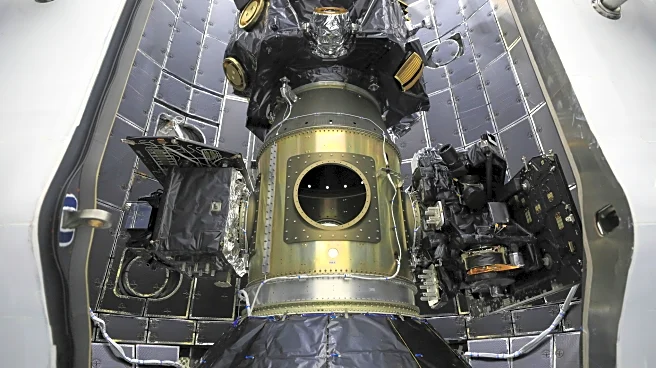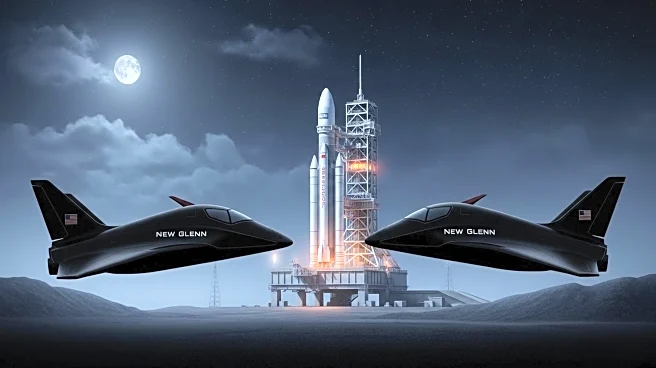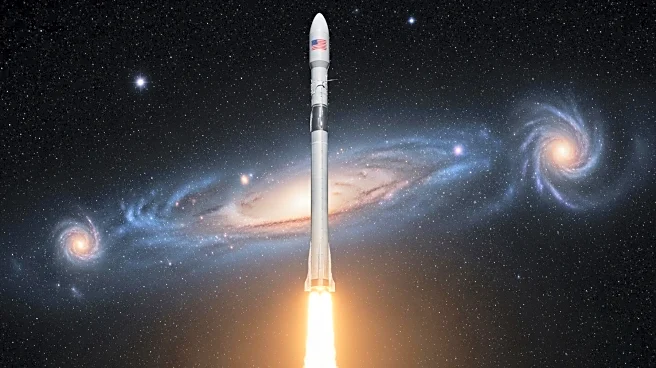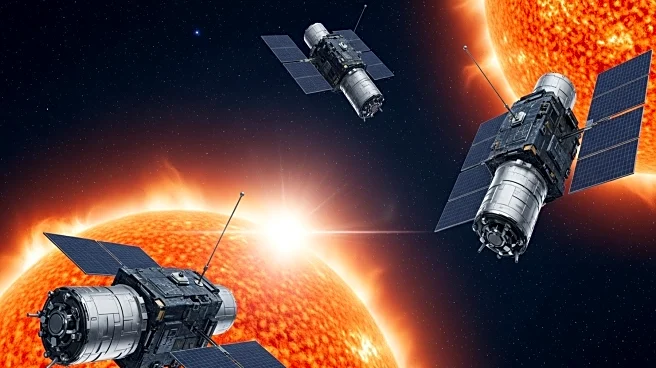What is the story about?
What's Happening?
SpaceX successfully launched three spacecraft on Wednesday morning from NASA's Kennedy Space Center in Florida. The mission aims to study the sun and space weather, focusing on their effects on Earth. The primary payload, NASA's Interstellar Mapping and Acceleration Probe (IMAP), will study the heliosphere, a magnetic bubble created by the sun that protects the solar system from harmful radiation. This observatory will provide radiation warnings to astronauts in space. Additionally, NASA's Carruthers Geocorona Observatory will analyze Earth's exosphere to understand how space weather impacts the planet. The U.S. National Oceanic and Atmospheric Administration's Space Weather Follow-on spacecraft will track solar storms and provide advanced warnings to interests both in space and on Earth.
Why It's Important?
The launch of these probes is crucial for advancing the understanding of space weather and its impact on Earth. Space weather can disrupt satellite operations, power grids, and communication systems, making it essential to have accurate forecasts and warnings. The IMAP observatory's ability to provide radiation warnings is particularly significant for the safety of astronauts as humanity plans missions beyond Earth's protective magnetosphere, such as to the moon or Mars. The Carruthers Geocorona Observatory's study of the exosphere will enhance predictions of solar activity impacts, while NOAA's Space Weather Follow-on spacecraft will ensure continuous monitoring of solar storms, safeguarding both terrestrial and space-based infrastructure.
What's Next?
The three spacecraft will travel to the Lagrange point, a location about 1 million miles from Earth in the direction of the sun, over the next 108 days. Once there, they will begin their missions to better understand space weather and protect humanity. The data collected will be used to improve space weather forecasts and develop strategies to mitigate its effects on technology and human activities.
AI Generated Content
Do you find this article useful?


